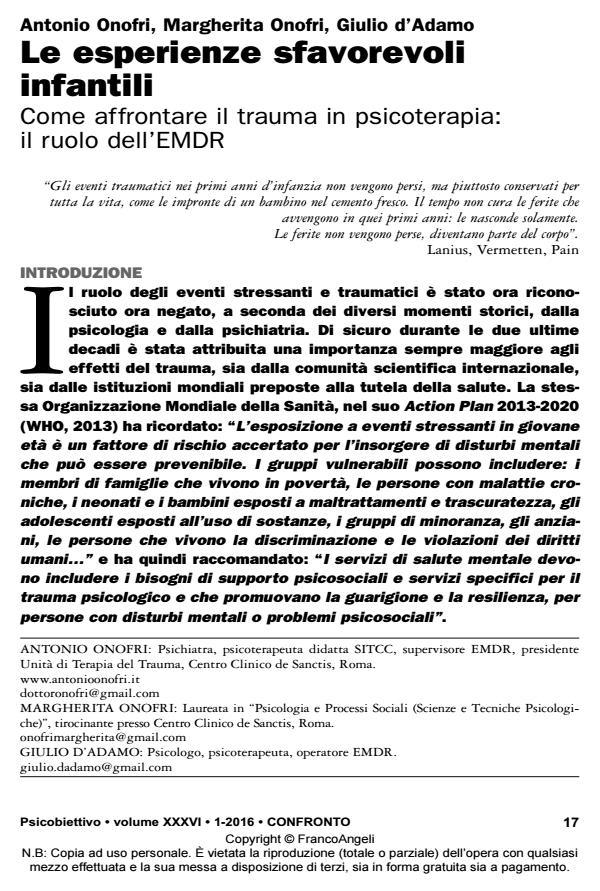The adverse childhood experiences. how to address the trauma in psychotherapy: the role of the emdr approach
Journal title PSICOBIETTIVO
Author/s Antonio Onofri, Margherita Onofri, Giulio D'Adamo
Publishing Year 2016 Issue 2016/1
Language Italian Pages 21 P. 17-37 File size 138 KB
DOI 10.3280/PSOB2016-001002
DOI is like a bar code for intellectual property: to have more infomation
click here
Below, you can see the article first page
If you want to buy this article in PDF format, you can do it, following the instructions to buy download credits

FrancoAngeli is member of Publishers International Linking Association, Inc (PILA), a not-for-profit association which run the CrossRef service enabling links to and from online scholarly content.
The Authors summarize the results of the important and vast epidemiological study on the Adverse Childhood Experiences known as ACE Study which shows a direct correlation between these kind of experiences, the risky health behaviours, and the somatic and psychiatric illnesses. They debate the hypothesis of the effects of the ACEs on the neurobiological and psychosocial development. The authors also illustrate the phase-oriented model of therapy for the post-traumatic states and how the EMDR approach can be used for all of the three phases of the therapeutic process for this kind of psychopathological conditions.
Keywords: Adverse Childhood Experiences; Trauma; Cognitive-Behavioral Therapy; Child Development; EMDR.
- La formazione specialistica degli psicologi nel progetto "Non Vedo, Non Sento, Non Parlo" a favore dei minori vittime di Esperienze Sfavorevoli Infantili - ESI Daniela D’Elia, Luna Carpinelli, Annamaria Scapicchio, Antonella Tomasetti,, Giulia Savarese, in MALTRATTAMENTO E ABUSO ALL'INFANZIA 1/2024 pp.87
DOI: 10.3280/MAL2024-001005
Antonio Onofri, Margherita Onofri, Giulio D'Adamo, Le esperienze sfavorevoli infantili Come affrontare il trauma in psicoterapia: il ruolo dell’EMDR in "PSICOBIETTIVO" 1/2016, pp 17-37, DOI: 10.3280/PSOB2016-001002